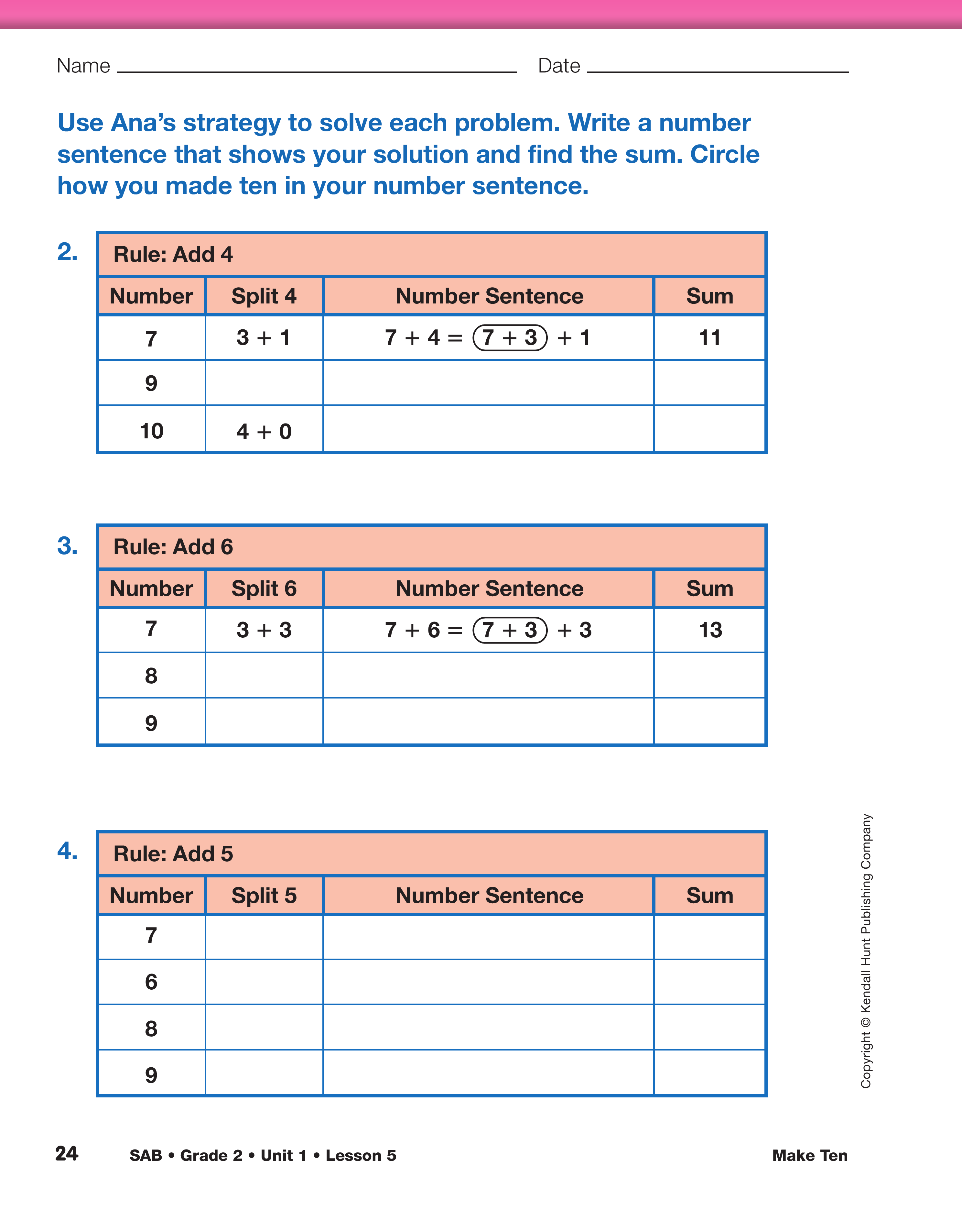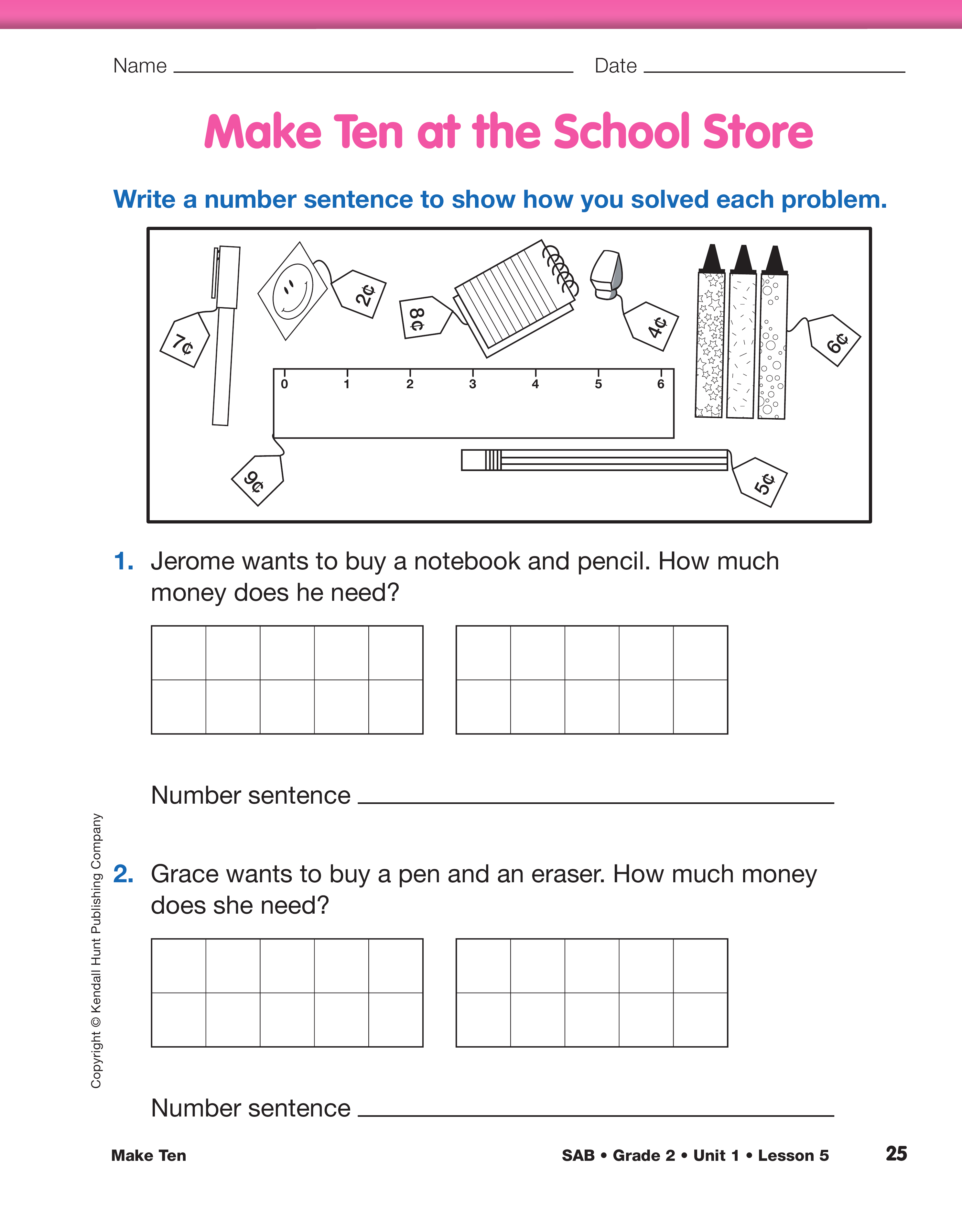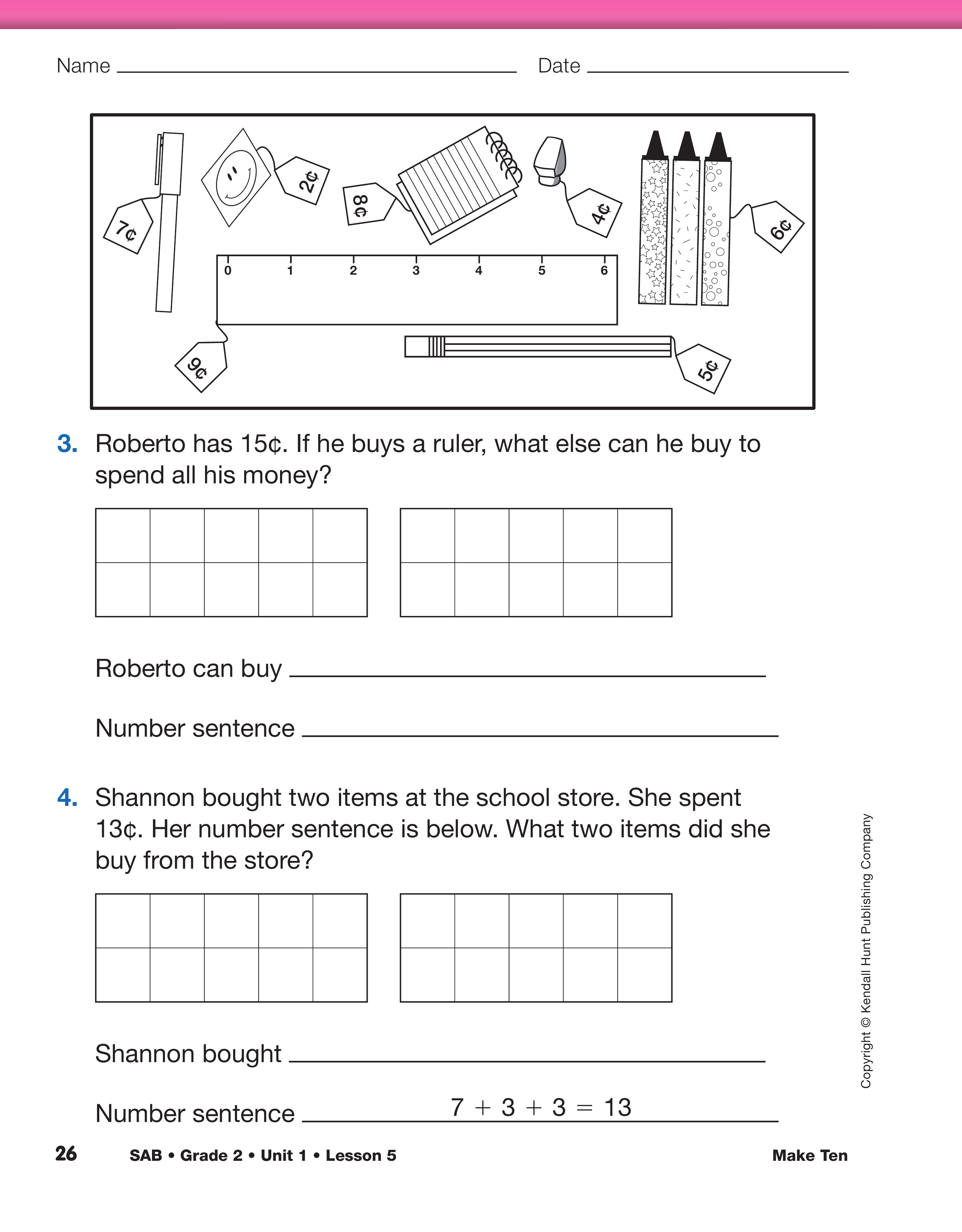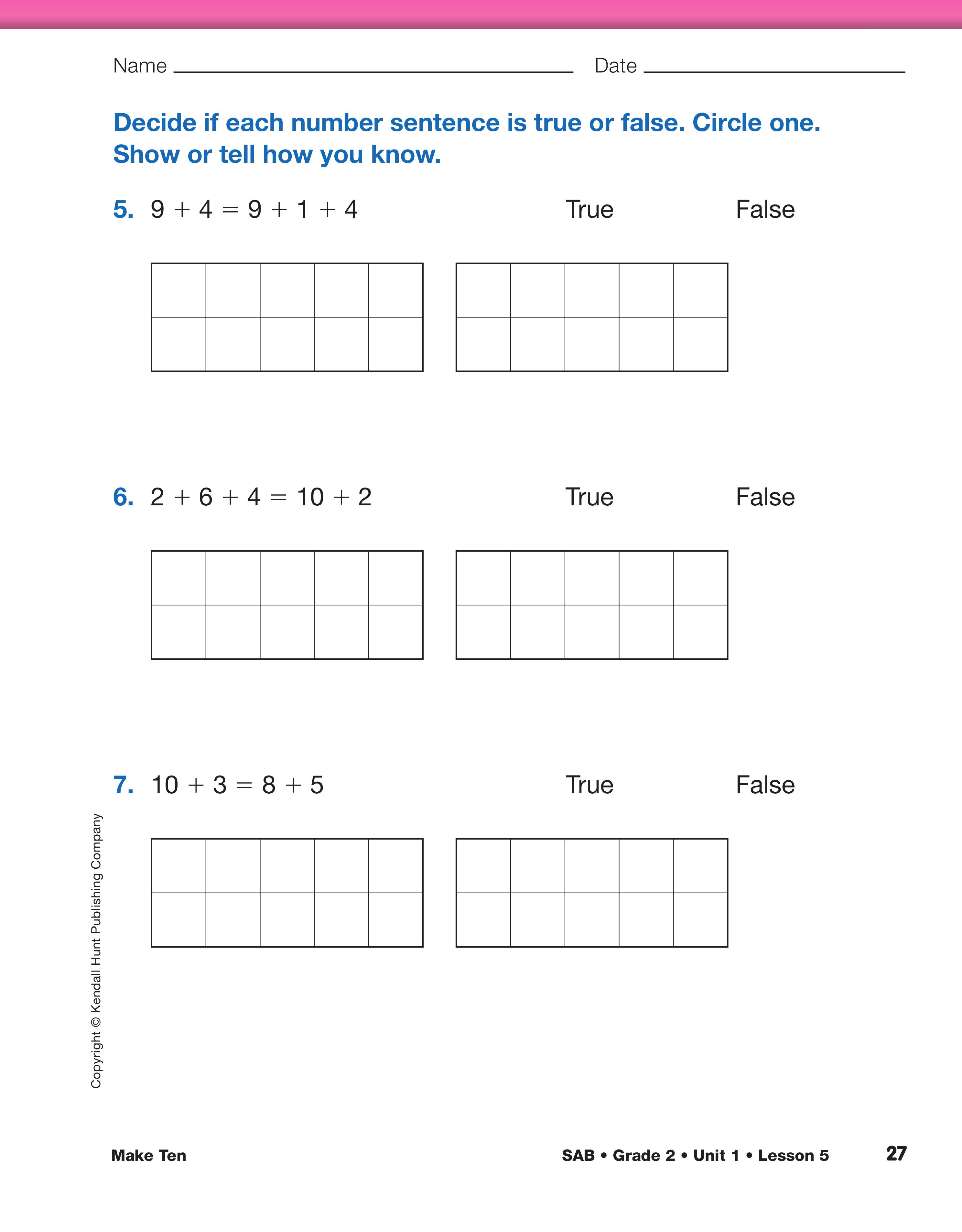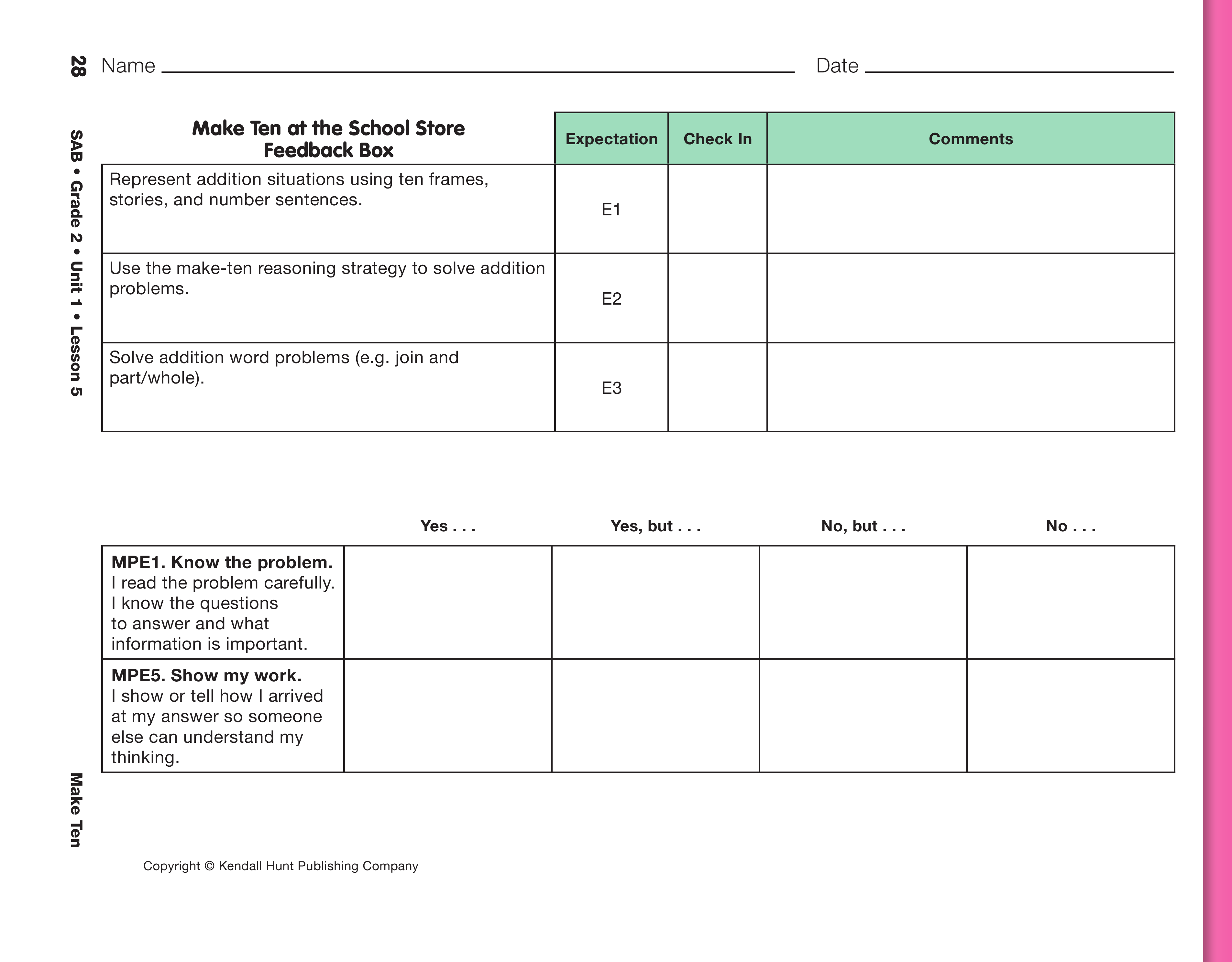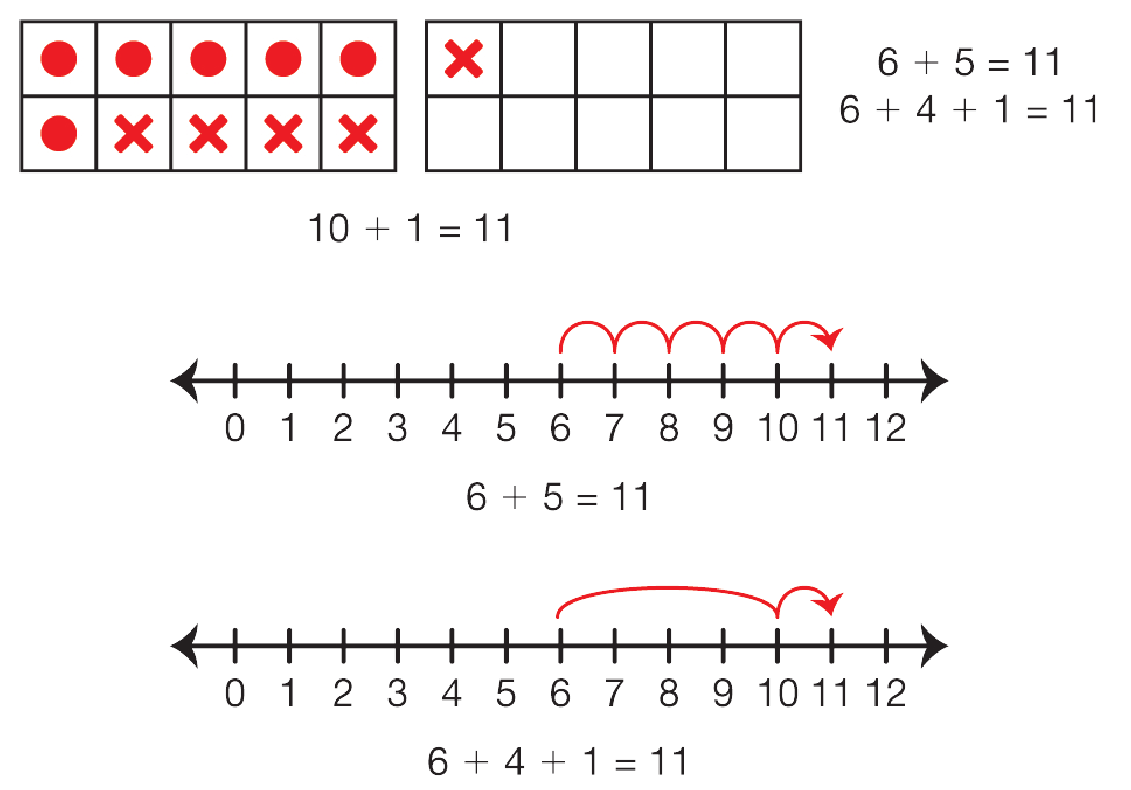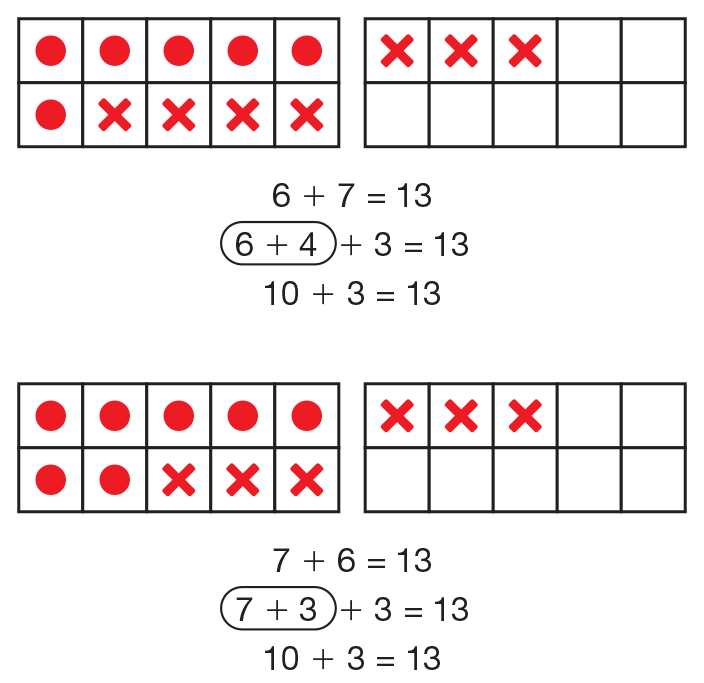Use True Number Sentence. Write 5 = 4 + 1 on a
display and ask if this is a true statement. Then
write:
6 + 5 = 11
6 + 4 + 1 = 11
10 + 1 = 11
- Which of these number sentences is a true statement?
How do you know? (They all are true.)
- How are the sentences alike? (Possible response:
They all show a way to find a sum of 11.)
- How are they different? (Possible response:
Two have two numbers to add. The other has
three numbers.)
- Look at 6 + 4 + 1 = 11. Do you see partner numbers
to make ten? (Yes, 6 + 4.)
- Who would like to use ten frames to show
6 + 5 = 6 + 4 + 1?
Ask a student to show this problem on a display of
the 8 Ten Frames Master. See Figure 3.
- Who would like to use a number line to show
6 + 5 = 6 + 4 + 1?
Ask a student to show this problem on a display of
the 0–20 Number Lines Master. See Figure 3.
- How does that help you solve 6 + 5? (Possible
response: I can find a partner of ten, make ten,
and then add what is left. It is easier to add on to
ten.)
- How was this problem solved? (Possible response:
by making ten and then adding like Jordan)
Make Ten in Rule Machines. Ask students to turn
to the Make-Ten Rule Machines pages in the Student
Activity Book. Read Ana's problem in Question 1
and ask students to work with a partner to help Ana
finish the problem. Use a display of the first page to
talk through Ana's steps.
Direct students' attention to Question 2. Ask a student
to describe the solution shown in the completed
example in Question 2 using a display of the page.
Tell students to use Ana's strategy to solve the
remaining problems in Questions 2–4. Students
should work with a partner. Make copies of the 8 Ten Frames Master readily available.
While students are
working, ask:
- Tell me how you solved [8 + 6].
- What number did you need to make ten?
- How did you figure that out?
Solve Word Problems Using Make Ten. Ask students
to turn to the Make Ten at the School Store
pages in the Student Activity Book. Tell them that
they will now use the make-ten strategy to solve
word problems. Direct students' attention to the
items in the school store picture.
- I am going to buy some crayons and a pen. How
much money do I need? What are the important
numbers in this problem? (6 cents for crayons and
7 cents for a pen)
- What are you going to do to solve it? (Possible
response: I am going to add the numbers or put
them together.)
- Who would like to act out the problem to be sure?
Ask a student to use connecting cubes to act out the
problem.
- Who would like to show how to solve the problem
using the make-ten strategy?
Show a display of the 8 Ten Frames Master and ask
a student to show how to solve 6¢ + 7¢ using the
make-ten strategy. See Figure 4.
- I noticed you started with 7¢ and added 6¢. Can
you solve this problem starting with 6¢ and adding
7¢? (yes)
- How are these solutions the same? (Both arrive at
the same answer.)
- How are these solutions different? (Possible
response: We started with different numbers.
I split 7 rather the 6.)
- Why does this work? (Possible response: The
order does not matter when you are adding.)
Ask students to work with a partner to complete
Questions 1–7 on the Make Ten at the School Store
pages in the Student Activity Book. Using a display
of the first page, refer to Expectations 1 and 5 on the
Math Practices page in the Student Activity Book
Reference section.
- What can you do to be sure you understand the
problem [MPE1]? (Possible response: act it out,
draw a picture)
- What should you include in your work [MPE5]? (Possible response: I need to show how I used
the ten frame, how I split a number to make ten,
and show my steps in number sentences.)
Use the Make Ten at the School Store pages with the
Feedback Box in the Student Activity Book to assess
students' abilities to represent addition situations using ten
frames, stories, and number sentences [E1]; use the
make-ten reasoning strategy to solve addition problems
[E2]; solve one- and two-step word problems [E3]; know the
problem [MPE1]; and show work [MPE5].
The Workshop in Lesson 9 provides additional targeted
practice.














